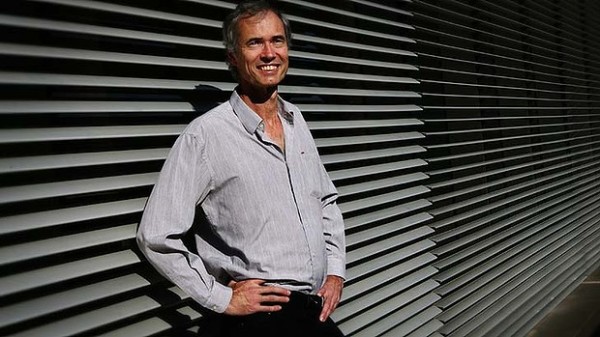Australian scientists have found a way of hugely increasing the efficiency of solar panels while substantially reducing their cost.
The University of NSW researchers have come up with improvements in photovoltaic panel design that had not been expected for another decade.
This has really got the industry very excited
The breakthrough involves using hydrogen atoms to counter defects in silicon cells used in solar panels. As a consequence, poor quality silicon can be made to perform like high quality wafers.
The process makes cheap silicon “actually better than the best-quality material people are using at the moment”, the head of the university’s photovoltaics centre of excellence, Professor Stuart Wenham, said.
Silicon wafers account for more than half the cost of making a solar cell. “By using lower-quality silicon, you can drastically reduce that cost,” he said.
“We’ve been able to figure out what the secret is that enables hydrogen to sometimes work the way people want it to, and sometimes doesn’t.”
At present, the best commercial solar cells convert between 17 per cent and 19 per cent of the sun’s energy into electricity. UNSW’s technique, patented this year, should produce efficiencies of between 21 per cent and 23 per cent.
“This has really got the industry very excited, not only in China, but elsewhere as well,” said Richard Corkish, head of the university’s School of Photovoltaic and Renewable Energy Engineering. Alumni of the school hold senior positions at many of the leading PV producers globally.
Separately, the UNSW’s Martin Green, dubbed the “father of photovoltaics” for his work to develop and commercialise silicon solar cell technologies, was last week elected into the UK’s renowed Royal Society.
Professor Green, whose work includes overseeing research teams and setting the current 25 per cent conversion efficiency record for solar PV, joins 1,450 of the world’s top scientists as a Royal Society Fellow.
Prices tumble
The price of solar panels has fallen by about 65 per cent in two years, partly due to a huge rise in production in China. Australians have been taking advantage of lower prices, with the number of homes with solar panels exceeding 1 million.
The phenomenal growth has caused some casualties in the industry as companies have taken on massive debt to expand supply, then struggled with falling prices in saturated markets. Notable among them is the recent debt default by Suntech Power, once the world’s largest solar-panel maker, founded by former University of NSW researcher Shi Zhengrong.
Panel prices are predicted to fall much further. European producers predict they will be 60 per cent cheaper by 2020. “Based on the technological advances we’re making, we think that’s certainly achievable,” Dr Wenham said.
Eight commercial firms have signed up to be a partner in developing the technology to an industrial scale, including Suntech, which continues to operate from its base in the eastern Chinese city of Wuxi and has a research unit in Sydney.
“It’s the kind of advance that other people are anticipating is a decade away,” Suntech R&D Australia managing director Renate Egan said. “It is quite a breakthrough.”
Funding
Suntech funded much of the early work, including in China. “Suntech has the right to use that (intellectual property) and UNSW has the right to licence the technology to third parties,” Dr Egan said.
Funding to help commercialise the technology will total about $15 million over three years, with the UNSW seeking support from the federal government’s Australian Renewable Energy Agency for part of that sum.
The annual funding of $5 million – equivalent to what bidders last month paid for the half-brother of champion race mare Black Caviar – is “a lot of money for us”, Dr Corkish said.
Already worth about $100 billion a year, the solar industry is expected to swell to about $140 billion by 2018, according to estimates published in April by Transparency Market Research.
Installed PV capacity probably surpassed 100 gigawatts, worldwide, in the March quarter, according to the International Energy Agency. Some forecasts project capacity will more than triple by the end of the decade. Australia ranked ninth, with installed capacity of 2.4 GW, at the end of 2012.






Leave a reply